|
Unraveling the Mysteries of Wolf-Rayet Stars: A Journey Through Stellar Evolution Valeria Monterroza, Joshua Mussie, Anjolie Tuazon, Howard Community College Mentored by: Brendan Diamond, Ph.D. and Kenny Diazeguigure, Ph.D. |
Abstract
Wolf-Rayet (WR) stars, distinguished by their high mass and temperature with stellar masses about 25 times that of the sun, exhibit distinctive features that offer valuable insights into their evolutionary trajectory. Notably rare, WR stars are characterized by high-velocity stellar winds, setting them apart from O-type stars by the absence of a hydrogen envelope.
These enigmatic stars continually expel the products of fusion from their circumstellar shells, evident through the prominent emission lines in their spectra. Spectral analysis of the chemical emissions from WR stars suggests their proximity to the critical stage of supernova implosion. The Carbon-Nitrogen-Oxygen (C-N-O) cycle plays a vital role in their evolution, each stage marked by distinct emissions. The Wolf-Nitrogen (WN) stage precedes the Wolf-Carbon (WC) stage, which is followed by the Wolf-Oxygen (WO) stage, a rapid precursor to the WR star’s transformation into either a black hole or a neutron star.
In our scientific investigation, we utilized low-resolution equipment to conduct spectrographic observations of the WR star EZ Canis Majoris (EZ CMa) (also known as WR-6 and HD50896) to determine where EZ CMa is in its stellar evolution and how close it may be to a supernova event. To enhance the precision of our research, we harnessed the AAVSO catalog to refine our astronomical and spectrographic equipment through systematic testing. Our investigations unveiled the presence of Oxygen (III) emissions in EZ CMa’s nebula Sh2-308 but undetected Oxygen (III) emissions on the star itself, a revelation that defied the initial spectral analysis of EZ CMa and indicates novel emission behaviors, marking a critical phase in its astrophysical star evolution. These findings significantly contribute to our broader understanding of the intricate dynamics and elemental behaviors within WR stars, offering invaluable insights into their evolutionary pathways and impending stellar destinies.
Introduction
Wolf-Rayet Stars
With stars, there are seven main star types: O, B, A, F, G, K, and M. However, with the identification of brown dwarfs—objects akin to stars but lacking the capacity for thermonuclear fusion and thus not emitting light—the classification system has been broadened to encompass non-main sequence types L, T, and Y. Among these, O type stars stand out as the largest and hottest.
The Wolf-Rayet (WR) phenomenon in stars refers to a stage in stellar evolution where massive and highly luminous stars undergo about 50-90% loss of their initial mass, caused by intense stellar winds [1]. Named after French astronomers Charles Wolf and Georges Rayet, who both independently discovered and classified WR stars in the 1860s, WR stars have peculiar spectra and are distinctive from the regular evolution sequence of the main star types.
These stars have several properties that are distinct from average O-types in the main sequence, which include their higher mass, temperature, and luminosity. The spectra of WR stars often show strong emission lines of helium (He) and are deficient in hydrogen (H) [1]. This is caused by intense stellar winds stripping away the outer layer of the star, revealing the helium-rich interior.
Due to their high mass, WR stars have shorter lifespans compared to stars that are in the main sequence. As the lifespan of the sun is about ten billion years, the lifespan of the average WR type star is about 200,000 years [2]. At the end of their lifespan, WR stars are thought to undergo a catastrophic supernova event. The specific type of supernova that a WR star may produce depends on several factors such as its mass and chemical composition. The two possible types of supernovae being supernova type Ib and supernova type Ic, where type Ib has lost its outer layer of hydrogen yet still has some remnant of its helium layer, and type Ic lost both layers of hydrogen and helium [4]. Supernova events are significant contributors to galactic dynamics. The typical kinetic energy of a supernova explosion is about 1044 Joules (J). Such force produces a disruption in the interstellar medium that aids in forming new stars, as well as ejecting matter entirely out of host galaxies in some circumstances. A supernova event would therefore seed interstellar matter into the interstellar medium and beyond [5].
Astronomical Spectroscopy
Wolf-Rayet stars are further classified into different subtypes based on their unique spectra. The two main subtypes are WN and WC stars, with WN representing nitrogen-rich and WC representing carbon-rich spectra. WO stars are another subtype of the WR phenomenon with oxygen-rich spectra. Yet, they are less common than WN and WC, as the formation of oxygen-rich spectra is thought to occur under specific evolutionary conditions [3].
Astronomical spectroscopy involves breaking down light into its components, referred to as spectrum, to reveal information about a celestial object such as luminosity, mass, radial velocity, and other physical features, while utilizing the Doppler shift. This procedure is performed with an astronomical spectrograph. Astronomical spectrograph designs vary, yet they typically contain several key components, such as an entrance slit, collimator, a diffraction grating or prism, and camera optics, usually consisting of a camera that captures the spectral image [6].
The spectral characteristics of a star, when observed through spectroscopic methods, allows us to classify them by type and by evolutionary stage. By providing information from a stellar object’s spectrum, astronomical spectroscopy becomes a powerful tool for determining the evolutionary stage of a WR star.
Methods
Target Selection
Our target star was selected due to numerous factors. The sky surrounding HCC measures as a class 7 on the Bortle scale, an indication of high light pollution, requiring our target star to be of high magnitude (brightness). Additionally, we looked at spectral type, as the spectral type is directly tied to the temperature and luminosity of the star, factors that need to be considered when seeking to identify a higher magnitude star. Our target star must also be an isolated, high-altitude star that is visible during our night sky to avoid imaging with high atmospheric density. Due to it having fulfilled these criteria, our chosen target star was EZ Canis Majoris (EZ CMa).
Wolf-Rayet star, EZ CMa is in the constellation of Canis Majoris found inside the Dolphin Nebula, located in the southern hemisphere. Its right ascension is 06h 54m 13s, and its declination -23º 55’ 41’’ [7], a few minutes arc north of fourth magnitude Omicron-1 CMa in the center of the constellation [8]. Its magnitude varies between 6.53 (dimmest) and 6.73 due to its orbit and has a distance of about 4,500 light-years away or 1.5 kiloparsecs [7]. EZ CMa’s spectral type is a WN4, with temperatures of 89,000 Kelvin and a luminosity of 400,000 Suns [8].
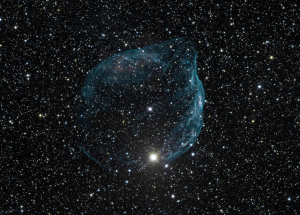
Figure 1: Image of EZ Canis Majoris (EZ CMa) (center) and the Dolphin Nebula taken with an OIII Filter
Observation Planning & Preliminary Observations
After deciding on our target star, we began observation planning and familiarized ourselves with the equipment through preliminary observations. Our observation planning consisted of planning for weather, keeping note of the weather conditions for the next few days, such as temperature, wind, precipitation, cloud cover and ceiling, humidity, and the moon phase. Keeping note of visibility, seeing, darkness, and smoke was also important. We also used this planning stage to plan the time window for our observation of the star, considering side-real time as it usually appears four minutes earlier than the predicted time.
Our preliminary observation procedures consisted of equipment set-up and ensuring full functionality. A few days prior to the scheduled observation, we set up the equipment during the daytime. The telescope was leveled and set up facing north with clean lenses and filters. The spacing between the back focus from the focuser to the sensor was checked for accuracy and made sure to have an autofocus system. During this time, we also checked for cable management, as poor cable management can result in drag that creates drifting spectra when imaged.
Observations were conducted on the roof of Howard Community College’s (HCC) Science, Engineering, and Technology (SET) building on the nights of March 15, 2023, and March 21, 2023. For these observations, we used the RC6 iOptron as our telescope, ZWO 1600mm Pro for the main camera, ZWO AM5 Harmonic for our mount, and ASI Air Plus for our CPU. Our telescope configuration of the iOptron RC6 telescope was the Astrophysics 0.67x focal reducer, a f/stop of f/6, and the Shelyak Star Analyzer 100 and 200 for the spectrographs. The main camera was cooled to –20 degrees Celsius and had a gain of 139.
Day of Observation
On the day of observation, some pre-observation procedures must be completed before we can begin imaging our target star. While we waited for our observation window, we filled out our observation log, recording the current weather conditions and visibility, as well as our equipment and their specifications. We also have a printed star map [9] to help us locate the star with our telescope. All software was ensured to be working and the telescope was then polar aligned. We located an example star, such as Sirius, to ensure that the telescope could locate our desired star.
During the observation window, EZ CMa is located with the telescope. We referred to the star map to ensure that we were looking at the right star. After locating EZ CMa, the spectrograph was attached to the front of the telescope lens, and we began imaging, rotating the spectrograph when necessary to ensure the spectra of the star did not cross other stars. After collecting data, we took images of EZ CMa at exposure times for 1, 2, 3, 5, 10, 30, 60, 120, and 180 seconds, stopping at overexposure. The images taken were saved on a flash drive, and multiple copies were made at the end of our observation window, then following the shutdown procedures for our telescope set-up.
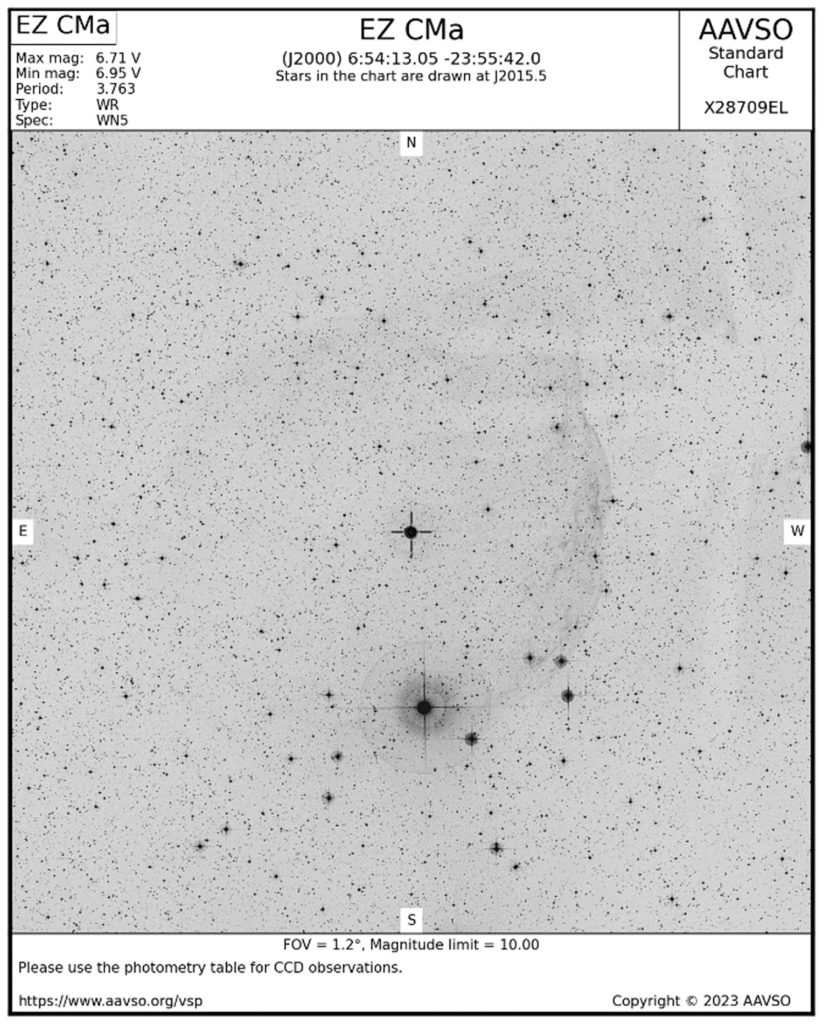
Figure 2: The star map of EZ Canis Majoris (EZ CMa) (center) from AAVSO [9]
Data Reduction
The image used for data analysis was decided based on how clear the star’s spectra is in the image. For data reduction, we used the software RSpec, calibrated beforehand. We used the image exposed for 60 seconds, since the images exposed for under 60 seconds are underexposed and those above are overexposed, both resulting in an unclear spectrum. Images exposed for 120 and 180 seconds were overexposed and had drift spectra, also resulting in an unclear spectrum. The image exposed for 60 seconds (Figure 3) was put into RSpec, cropping the image to just the star and its spectra, to obtain the spectrum for data analysis. Figure 3 shows an uncropped image.
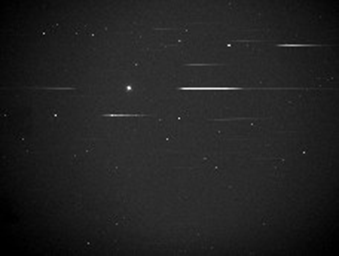
Figure 3: The 60-second uncropped exposure spectra of EZ CMa
Results & Analysis
The optical spectrum (Figure 4) derived from the 60-second exposed spectra of EZ CMa (Figure 3), contains prominent helium II (He II) emissions, carbon IV (C IV) emissions, nitrogen IV (N IV) emissions, and hydrogen-alpha (H-α), beta (H-β), and gamma (H-γ) emissions of the Hydrogen Balmer series. The detection of C IV indicates that EZ CMa has undergone partial helium fusion, classifying the star to be in its WC stage [10].
To ensure the accuracy of our data, we utilized the AAVSO catalog to compare our data to previously obtained data. Our data was compared to data obtained using a much higher resolution spectrograph [11], with a resolution of 2100 compared to our resolution of only 200. Although data obtained with a much higher resolution will undoubtedly pick up more data, the peaks of the emissions were still expected to match up.
Comparing our data to AAVSO data brought unexpected findings. Though compared to a much higher resolution, the emission peaks of our data matched with those from AAVSO, (Figure 4). However, our spectrum failed to detect the emissions detected by AAVSO at 4600A and 4200A, which are He II and potential Fe II emissions, respectively. In addition, both spectra detected Si IV emissions at 4089A indicating that oxygen emissions should be present in our spectra due to the C-N-O cycle, though oxygen emissions were not detected by either spectrum at 5007A. Therefore, our data revealed unexpectedly high temperatures and an absence of expected O III emission in our low-resolution spectrum.
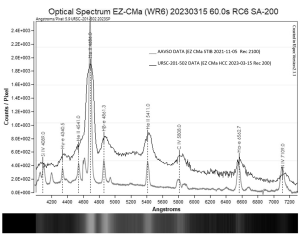
Figure 4: Superimposition of AAVSO data for EZ Canis Majoris (EZ CMa) emission spectra from 2021-11-05 onto our team’s data from 2023-15-03
We hypothesized that the undetected oxygen emissions may have ejected from the star into the star’s nebulosity by their high-velocity winds. To check this hypothesis, we imaged EZ CMa and its nebula utilizing an O III filter (Figure 1). As seen in Figure 1, the star’s nebulosity is blue, confirming that the oxygen emissions are present in the nebula. However, we are still unsure as to why neither spectrum was able to detect these oxygen emissions on the star, EZ CMa, itself.
Calibration of New Telescope
To confirm the presence of oxygen on the star, we need to use a higher-resolution spectrograph to re-examine the star and surrounding nebula. Our strategic approach is to use a higher resolution telescope than the one used by AAVSO to detect the undetected He II and potential Fe II emissions and potentially detect the missing oxygen from both AAVSO’s and our spectra. Our findings highlight the need for further observations to better understand the unique characteristics of WR stars and their place in stellar evolution and galactic dynamics.
Upon discovery of the missing O III emissions from our spectra, we began the calibration of our new higher-resolution telescope in the Fall of 2023 as a primary step towards understanding the cause behind the undetected emissions. Our new equipment consists of the Celestron C11 as our telescope, the AP 1100GTO as our new mount, and the Shelyak LISA Pack High Luminosity Spectroscope as our new spectrograph. The Atik 414Ex Mono becomes our new main camera, or in this case the acquisition CCD camera, with the Celestron f/6.3 reducer. Since the Spectroscope can hold both a main camera and a guiding camera, we now have the Atik 314L+ Mono as our guiding camera. While RSpec remains our main software for data analysis, instead of ASiair we now use Demetra, Ph2 Guiding for controlling the guide camera, and Artemis Capture for obtaining the spectra during our observations.
The LISA Spectroscope is entirely more complex in comparison to our previous spectrograph, the SA100 and SA200. While we were able to easily attach the SA100 and SA200 to the main camera, the Spectroscope is a much larger module and requires separate calibration. The Spectroscope came with a calibration module that contains a white halogen lamp for flats and a Neon lamp for calibration [1], making it simpler to calibrate.
We then started to calibrate the LISA Spectroscope. The Spectroscope was first inspected for loose screws, broken, or missing parts, fixing if necessary and sealing any potential sources of light leaks. To begin calibration, the main camera and guiding camera were screwed into their respective locations, (Figure 5). The cover of the calibration window was removed, and the calibration light was injected through this window (Figure 5).
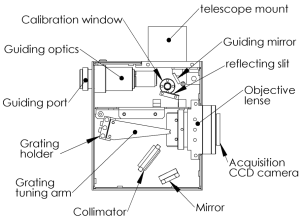
Figure 5: The main parts of the LISA Spectroscope [12]
The injected calibration light follows the light path to the guiding optics and CCD camera (Figure 6). During the calibration of the guiding camera, we focused on centering the slit, moving it up and down if necessary. The main CCD camera was calibrated, with a focus on the spectrum produced, but in the correct orientation and position. Both the autoguiding and main camera must be in the correct position and orientation, as this is crucial for collecting accurate data.
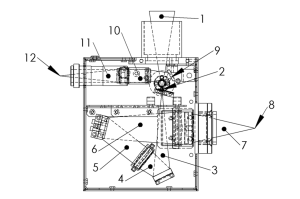
Figure 6: The light path of the LISA Spectrograph [12]
The main camera was connected via USB to the laptop, taking images using the software Artemis Capture to view the spectrum. Our first couple of images either had part of the spectrum cut off or were out of alignment and uncentered. To correct this, fine-tuning was performed using the screws and rotating our camera as necessary. Our final calibration spectrum is presented in Figure 7.

Figure 7: The calibration spectra formed by Neon and Argon light
Conclusions and Future Work
This study has systematically investigated the spectral characteristics of WR stars, with a particular focus on EZ Canis Majoris (EZ CMa). Through comprehensive spectrographic analysis, we have identified the presence of Oxygen (III) emissions within the nebula Sh2-308 associated with EZ CMa. This finding not only challenges previous spectral interpretations but also underscores the intricate and dynamic processes governing the evolution of WR stars. Utilizing sophisticated astronomical and spectrographic instrumentation, our work has significantly advanced our understanding of the elemental compositions and evolutionary pathways of these stellar entities.
Our research contributes to the academic discourse on WR stars by providing empirical evidence that elucidates the complex nature of their evolution. The detection of Oxygen (III) emissions particularly suggests a revision of existing models of stellar behavior and composition in the late stages of stellar evolution. This study, therefore, represents a meaningful advancement in astrophysics, offering new insights into the mechanisms underlying stellar evolution and highlighting the importance of continuous observational efforts using advanced technological tools. Our findings underscore the pivotal role of detailed spectral analysis in unveiling the mysteries of the cosmos, thereby enriching our comprehension of the universe’s astrophysical phenomena.
The conclusions of this study mark the commencement of an extended trajectory of research into the spectral characteristics of WR stars, particularly through the lens of EZ CMa. The detection of Oxygen (III) emissions within EZ CMa’s nebula, Sh2-308, not only enriches our current understanding but also opens multiple pathways for future investigations. To further substantiate these findings and explore the underlying astrophysical phenomena, we propose the application of a higher-resolution spectrograph in our subsequent observations. The integration of our newly calibrated telescope, outfitted with the Celestron C11 and the Shelyak LISA Pack High Luminosity Spectroscope, is anticipated to significantly augment the precision and detail of our spectral analyses.
Going forward, we aim to rigorously document the oxygen emissions in EZ CMa. This effort is expected not only to corroborate our preliminary observations but to also deepen our comprehension of the elemental compositions and evolutionary sequences of WR stars. Furthermore, meticulous calibration and alignment of our new telescope mount are projected to enhance the veracity and reliability of our observational data.
The prospective research agenda is poised to propel discovery and innovation within the domain of stellar evolution, with a specific emphasis on elucidating the pivotal stages that precipitate supernova implosions or the genesis of neutron stars. The insights derived from our examination of EZ CMa promise to invigorate subsequent scholarly inquiries into the cosmic phenomena, thereby inspiring future generations of astronomers and astrophysicists.
In summation, this investigation constitutes a meaningful advancement in the elucidation of WR stars and their integration into the broader cosmic context. Building upon the foundational insights garnered from this research, we anticipate the unveiling of novel perspectives within the captivating realm of stellar evolution.
Contact: valeria.monterroza@howardcc.edu, jmussie@howardcc.edu anjolie.tuazon@howardcc.edu
References
[1] W.-R. Hamann, A. Sander, H. Todt, and J. Vink, “The True origin of Wolf-Rayet stars,” 2015. Available: https://publishup.uni-potsdam.de/opus4-ubp/frontdoor/deliver/index/docId/8784/file/proceedings_S133-138.pdf
[2] “Comparing Sizes: the Sun and WR 140,” NASA Jet Propulsion Laboratory (JPL). Available: https://www.jpl.nasa.gov/images/pia25431-comparing-sizes-the-sun-and-wr-140
[3] R. Walker, “Analysis and Interpretation of Astronomical Spectra Theoretical Background and Practical Applications for Amateur Astronomers.”
[4] L. Dessart et al., “Core-collapse explosions of Wolf-Rayet stars and the connection to Type IIb/Ib/Ic supernovae,” Monthly Notices of the Royal Astronomical Society, Apr. 2011, Available: https://academic.oup.com/mnras/article/414/4/2985/992957
[5] J. C. Wheeler, “Resource letter: Ots-1: Observations and theory of Supernovae,” American Journal of Physics, vol. 71, no. 1, pp. 11–22, Dec. 2002. doi:10.1119/1.1523076
[6] P. Massey and M. M. Hanson, “Astronomical Spectroscopy,” 2013. Available: https://arxiv.org/abs/1010.5270
[7] D. Ford. “EZ CMa (Star).” In-The-Sky.org. Available: https://in-the-sky.org/data/object.php?id=TYC6522-3270-1
[8] J. Kaler. “EZ CMA.” STARS. Available: http://stars.astro.illinois.edu/sow/ezcma.html
[9] “Variable Star Plotter.” AAVSO. Available: https://app.aavso.org/vsp/chart/?chartid=X28709EL
[10] R. Walker. “Wolf Rayet Stars,” in Spectroscopic Atlas for Amateur Astronomers, 2013, Ch. 8
[11] STIB, September 5, 2021. “EZ Cma – 2021-11-05,” Distributed by AAVSO, https://app.aavso.org/avspec/obs/8983
[12] “LISA High Luminosity Spectrograph User Guide.” Shelyak Instruments. Available: https://www.shelyak.com/wp-content/uploads/DC0012A-LISA-User-Guide-En.pdf
